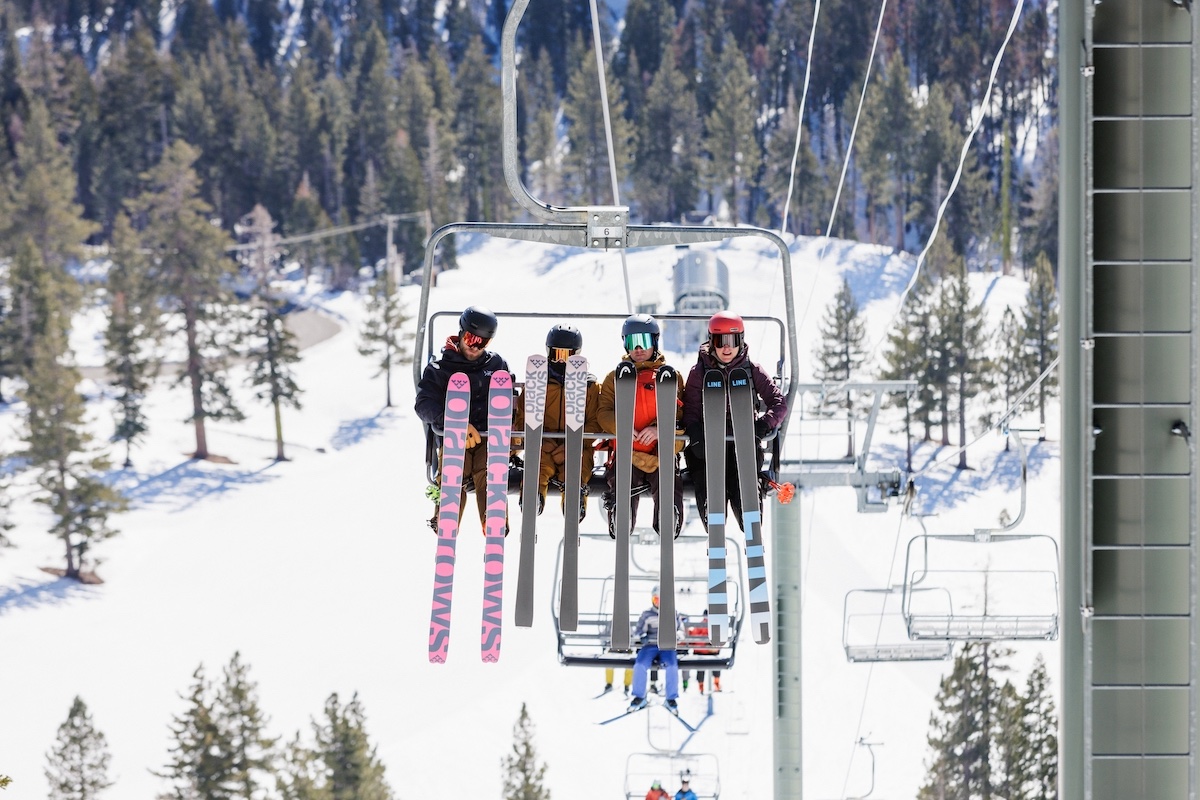
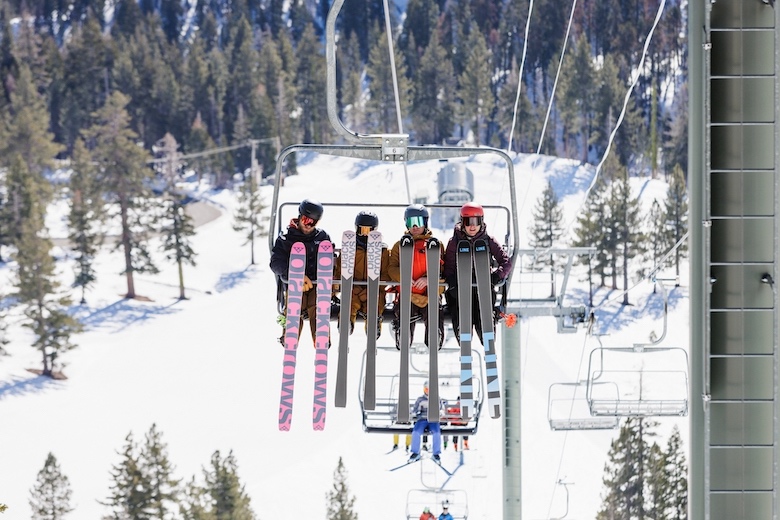
There’s nothing quite like getting first tracks at the resort, nailing a new trick in the terrain park, or finding fresh powder in the backcountry–but skiers need the right tool for the job. The industry is vast and expanding by the year, so knowing the best ski brands for your needs can be a challenge. While selecting the gear that's appropriate for your needs is important, supporting a brand you know and trust can help a great deal with the buying decision. Below we break down our favorites, including a brief history, each company’s most popular models, and what sets them apart from the competition. For more information and our top picks in each category, see our ski gear reviews.
Editor’s note: We updated this article on August 22, 2025, to include information on new models for the 2025/26 ski season and add industry updates.
Location: Isère, France
Popular models: Experience, Sender, and Black Ops
What we like: Wide range of well-made alpine-oriented gear for all ability levels.
What we don’t: We miss the discontinued “7” series.
Founded in 1907 and headquartered in the French Alps, Rossignol has pioneered ski innovation since their inception. Rossignol’s current lineup includes everything from groomer-friendly models that are staples in rental fleets—their Experience is a big hit for groomers and East Coast hardpack—to capable big-mountain and freeride designs. Their backcountry collection is limited compared to some other brands, although their partner company, Dynastar, has a handful of more touring-friendly models. And we appreciate that Rossi’s technology and innovation transcend ability levels, from the top of their lineup all the way to beginner designs like the Experience 78 Carbon. All in all, this is a storied brand with a wide reach, and their skis are typically well made and high-quality.
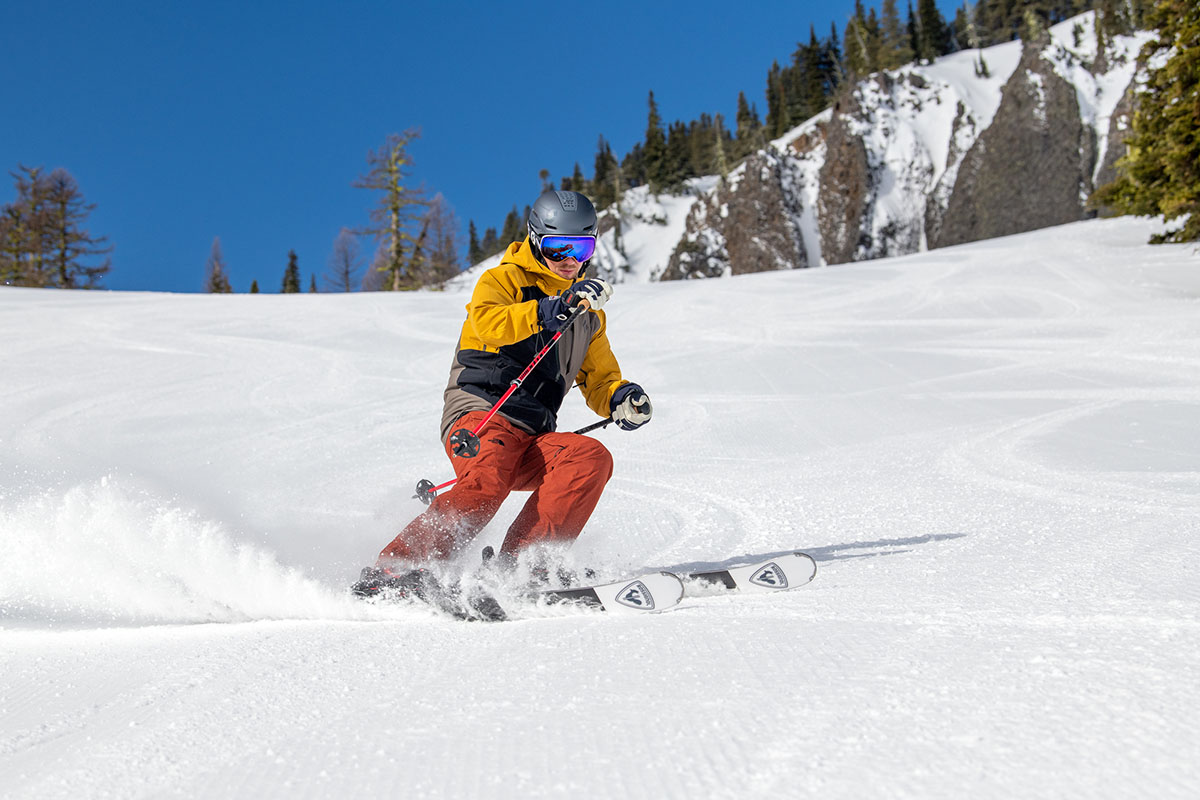
Their “7” series was wildly popular for years within the all-mountain freeride category—including the Soul 7, whose yellow tips were a common sight on the mountain. But a few seasons back, Rossignol made the bold choice to completely ditch the proven line and go in a new direction with their Black Ops and Sender collections (formerly grouped under the same “Black Ops” name). Both range from beginner-friendly and binding-equipped models (the Black Ops 92 and Sender 90 Pro) all the way up to wide, powder-ready offerings (the Black Ops 118 and Sender Free 110). Our experience with the all-mountain-ready Sender Pro nicely sums up our overall impression of the latest offerings: It retains a good dose of the Soul’s energy and soft-snow flickability but isn’t as easy or natural to drive, especially over tricky terrain (intermediates in particular will likely find it tougher to control). But initial reviews have been mostly positive, and we can’t fault Rossignol for taking a leap of faith.
Location: Seattle, Washington
Popular models: Mindbender and Wayback
What we like: Durable, long-lasting designs from beginner to expert.
What we don’t: Not the highest performance among high-end brands.
K2 has been a mainstay in the ski industry since the 1960s, with an extensive lineup that covers a wide range of ability levels and riding preferences. Credited with creating the first fiberglass skis, K2 is a classic brand with a strong commitment to innovation and huge presence on the mountain—take one look at the lift lines and you’re bound to spot at least a few. In fact, one of our former editors learned how to ski on some used K2s (the discontinued Perfect Luv) and recently taught a friend on the same pair.
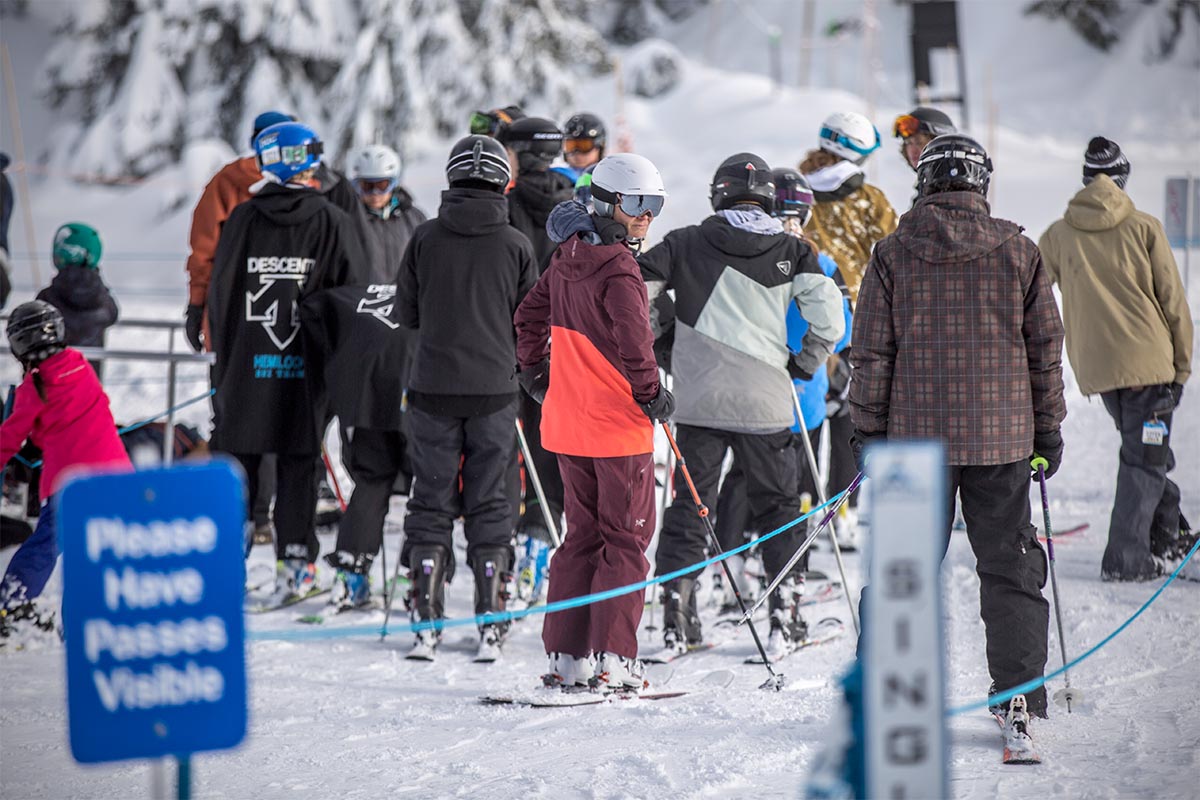
The Mindbender is one of our favorite skis in K2’s current lineup. The 85-millimeter version is great for riders from beginner to advanced, with good float for its width and a smooth and effortless feel on hardpack. Stepping up to the 99Ti variation, you get more widespread appeal with excellent stability, a planted design, and a forgiving ride. In recent years, K2 has made strides to add more touring and freeride-centric skis to their fleet––and they made good on their ambitions. For the non-skiers among us, K2 also has a solid collection of snowboards and splitboards.
Location: Salzburg, Austria
Popular models: Brahma, Black Pearl, Bonafide, and Rustler
What we like: Sturdy designs and a leader in women’s-specific skis.
What we don’t: Not as beginner-friendly as the brands above.
Based in Austria and owned by the Tecnica group, Blizzard is a clear leader in the all-mountain market and a strong presence in the touring world too. Their collection features a host of our favorite quiver-killer designs, including the Rustler, Bonafide, and Brahma. The latter two are especially popular among hard chargers, with sturdy builds that include two sheets of metal in the construction. And as we mentioned, Blizzard also offers competitive backcountry options, including the well-rounded Zero G line. The Zero G 105 is our favorite overall touring ski this year for its impressive capabilities on both the uphill and downhill.
What sets Blizzard apart, however, is their lineup of women’s-specific designs. Led by Leslie Baker-Brown––the first woman to truly break into the hard goods side of the ski industry after a successful career as a professional ski racer––Blizzard-Tecnica has been putting women's-specific designs at the forefront instead of treating them as an afterthought. The Black Pearl collection, in particular, is a real standout. That ski line ranges from 82 to 97 millimeters in width, which is a nice spread for everything from East Coast hardpack to West Coast powder. We also love the Sheeva 10—the women’s counterpart to the Rustler 10—which is a great all-rounder with excellent carving abilities and soft-snow versatility (for more, see our in-depth Sheeva 10 review). Overall, there are fewer beginner-friendly options here, but for advancing intermediates to expert riders, Blizzard is one to have on your radar.
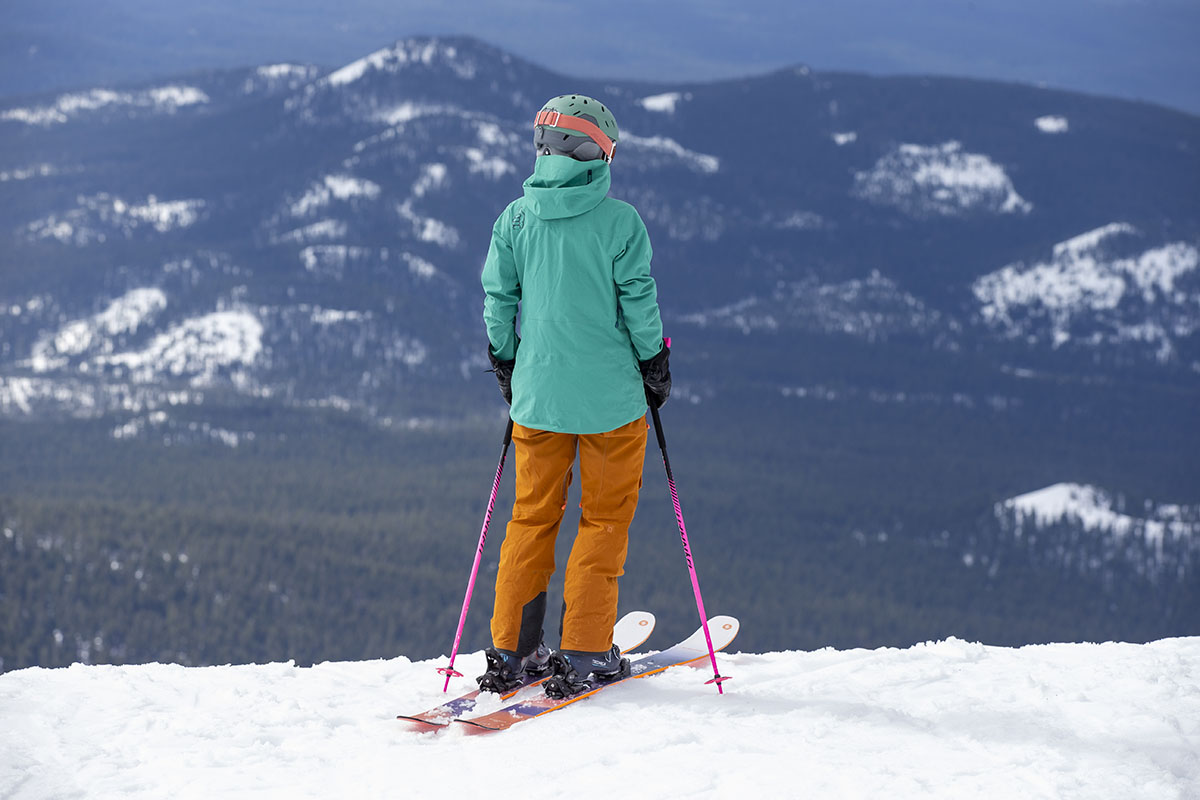
Location: Straubing, Germany
Popular models: Secret, Revolt, and Blaze
What we like: Powerful, satisfying carving skis.
What we don’t: They take some effort and expertise to control.
Völkl has been pushing out quality skis since the 1920s and currently holds the title as the largest ski manufacturer in Germany. The brand has a rich history in alpine ski racing, but their all-mountain collection consistently gets high praise. The Mantra (and women’s Secret), in particular, is one of the most well-respected skis among hard chargers, with a sturdy, fast, and powerful personality that excels all over the mountain. Other favorites include the Blaze, a mixed resort/backcountry design with an approachable build and price, and Kendo, a classic East Coast all-rounder that’s at home on groomers but can hold its own in the back bowls.
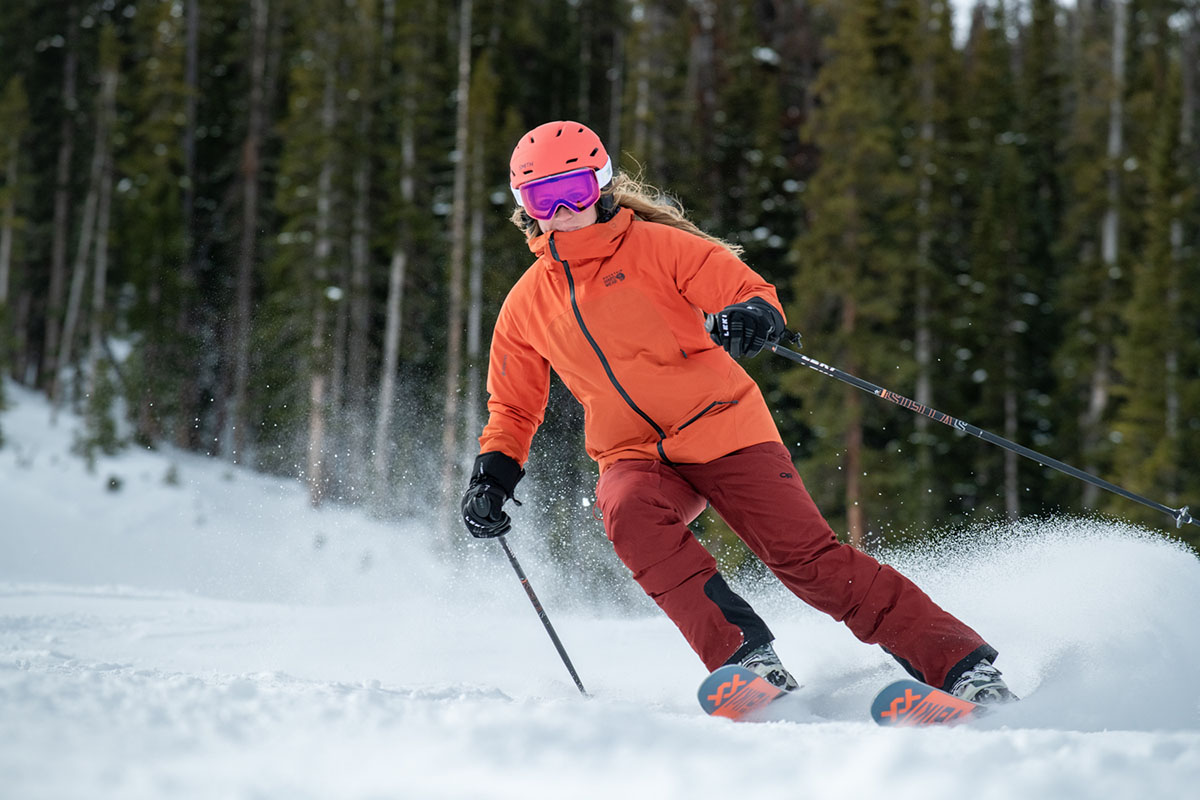
Völkl has a reputation for creating carving skis that hold an edge nicely (even among their wider models), and they’re known for their durable and reliable builds. However, the tradeoff is that many of Völkl's designs—including the aforementioned Mantra and Blaze—take some effort to control, so true beginners will likely find them hard to manage, and especially in firm conditions. New for 2026, Völkl has added Revolt 101 as their premiere everyday freeride ski with an actual wooden core. Expect the Revolt 101 to deliver more control while getting the ski on its side, and shock-absorption from the progressive, stiffer flex. The umbrella MDV brand also includes binding manufacturer Marker and ski boot maker Dalbello, which are two of the top companies in their respective fields.
Location: Treviso, Italy
Popular models: Enforcer and Santa Ana
What we like: Excellent quality and some of the most well-rounded designs on the market.
What we don’t: Pretty modest lineup overall.
Nordica began as a ski boot manufacturer in the late 1930s, but the brand has since developed a well-rounded collection of skis (boots are still a big part of their business). Their lineup is modest overall compared to bigger brands—they offer eight models including one race, one freeski, one touring, two on-piste, and three all-mountain designs. But these numbers don’t tell the whole story: Nordica’s skis are well built, durable, and a great value for what you get.
We’ve had the Enforcer (men's) and Santa Ana (women's) models ranked as our top choice in our all-mountain ski round-up for years running. The primary reason: versatility. This ski is about as well-rounded as they come, with a do-everything personality, poppy and responsive nature, and natural and predictable performance across a wide variety of terrain. We’ve been skiing the 97-millimeter Santa Ana for the past few seasons in the west, and have very few complaints. For intermediate to expert riders looking for one ski to do it all, this collection is simply hard to beat.
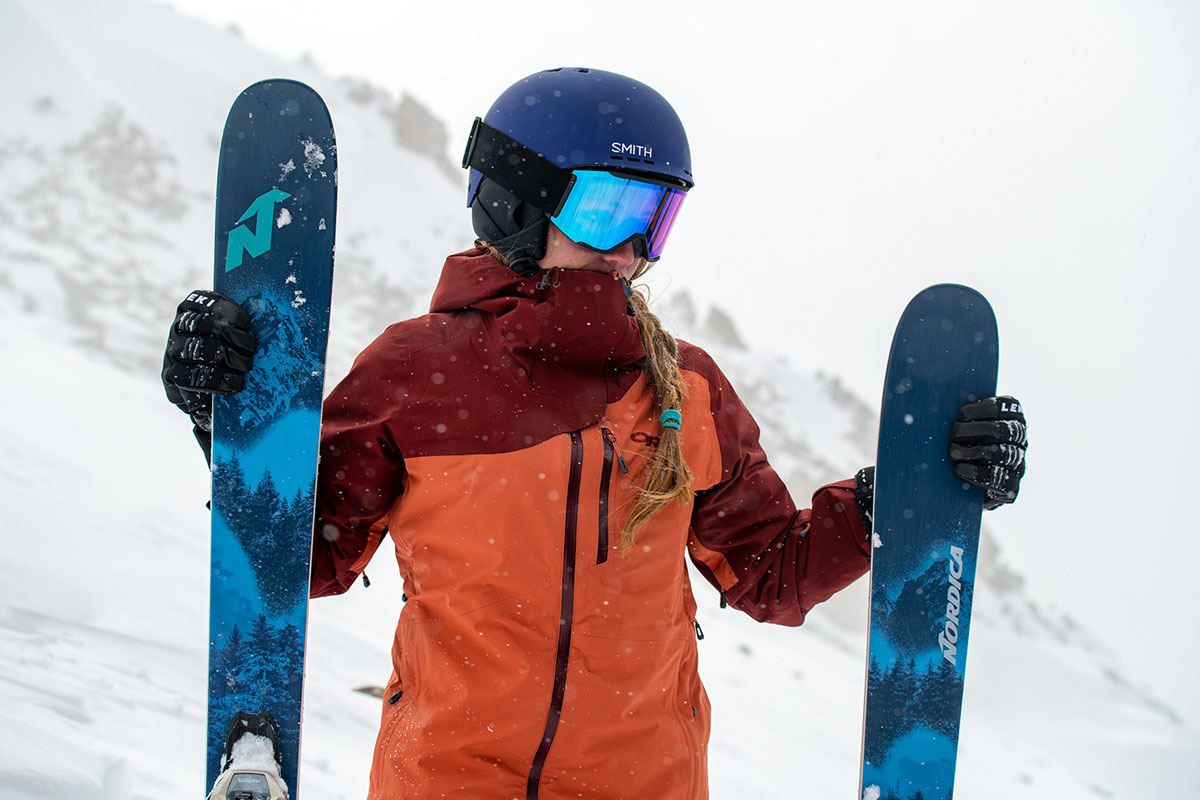
Location: Kennelbach, Austria
Popular models: Kore and Kore X
What we like: Out-of-the-box thinking and unique constructions.
What we don’t: There are some inherent tradeoffs in pushing the boundaries.
Skis were made of wood in the 1950s, but aeronautical engineer Howard Head felt that metal—which he used in designing aircraft components—would boost performance by increasing durability and turnability. He was right, and within a decade, Head had positioned itself as one of the leading ski manufacturers in the U.S. More recently, Head skis have been found under the feet of top World Cup and giant slalom racers, with a number of gold medals to their name. And within the wider ski market, Head remains a competitive brand that continues to innovate year after year.
Head’s Kore series, in particular, made waves with an experimental-looking construction. Rather than a traditional plastic topsheet, the Kore uses a polyester fleece material, which results in a lighter-weight ski that manages to retain excellent stiffness and high-speed stability (see our in-depth Kore 93 review). Heading into the '25/26 season, Head has completely overhauled the Kore series. Now you can find the all-mountain Kore X series, as well as the freeride-oriented Kore Ti line. The revamp includes new flex profiles, ski shapes, rocker specifications, and construction change-ups. They also have an extensive lineup of racing designs and more groomer- and hardpack-friendly options.
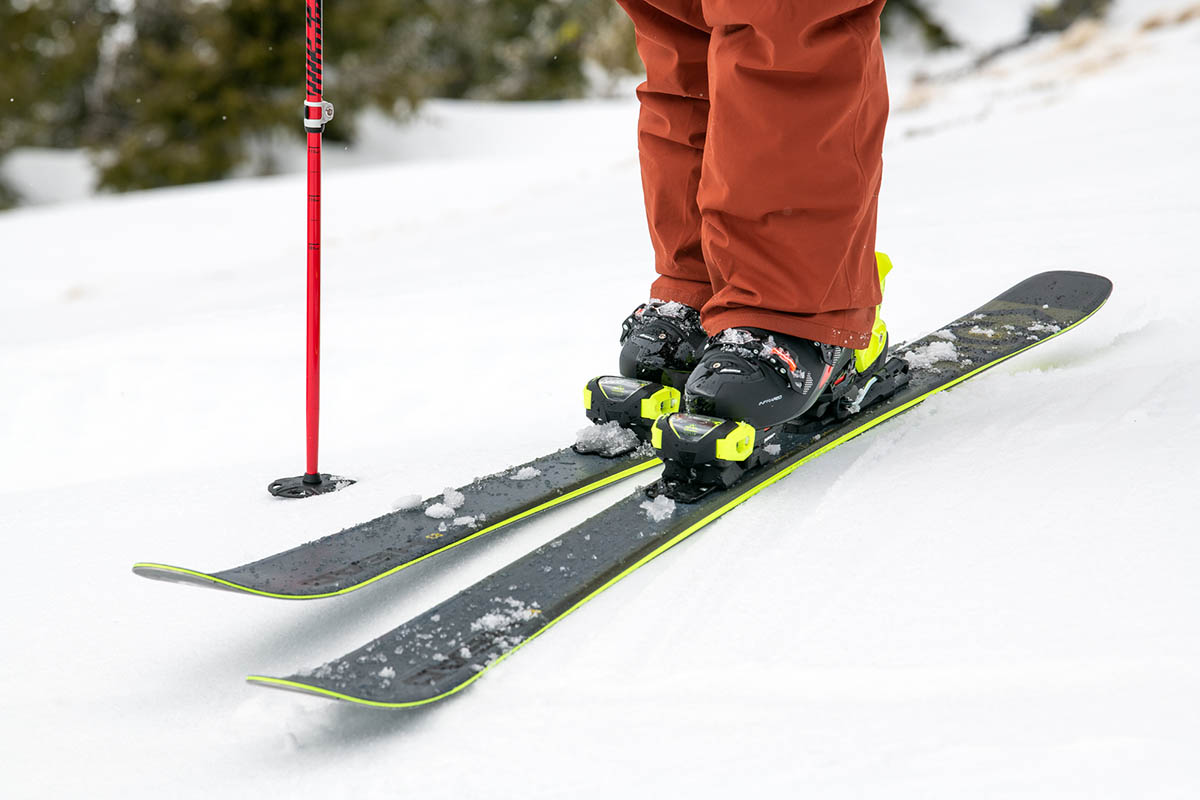
Location: Annecy, France
Popular models: QST and Stance
What we like: A well-rounded outdoor brand with a rich heritage in skiing.
What we don’t: Bindings aren't as solid as their ski construction.
Unlike the companies above, Salomon is a do-everything brand that covers a wide range of outdoor sports and gear, from hiking and running to Nordic skiing and snowboarding. They also sponsor some of the top endurance athletes in the world, including Cody Townsend (a top freeskier known for his bold big-mountain objectives) and Courtney Dauwalter (a competitive ultra runner). It's important to note that they're part of the large ski conglomerate Amer Sports, sharing ideas and designs with Atomic and Armada, among others. While "doing it all" usually leads to a bit of "not doing anything the best," Salomon is solid when it comes to skiing and running. On the ski side, Salomon has a rich history in both alpine and backcountry travel, and their current collection—while relatively limited—covers a healthy range for both on- and off-piste use.
Salomon’s flagship freeride/all-mountain design is their popular QST, which provides excellent floatation in a playful, responsive package. Cody Townsend's signature Salomon QST Echo touring skis have been a trusty do-it-all touring ski for ski mountaineers since their launch. For those who mainly stick to the trail, their Stance all-mountain ski is a sturdy performer on hardpack with great energy for carving and impressive stability at speed. And out of bounds, their Mtn collection lacks a bit compared to other similar offerings. The S/Lab Shift MNC found high praise and discontent simultaneously with backcountry skiers, and the lightweight Mtn Summit had some manufacturing reliability issues. That being said, Salmon makes overall quality skis for the up and downhill.
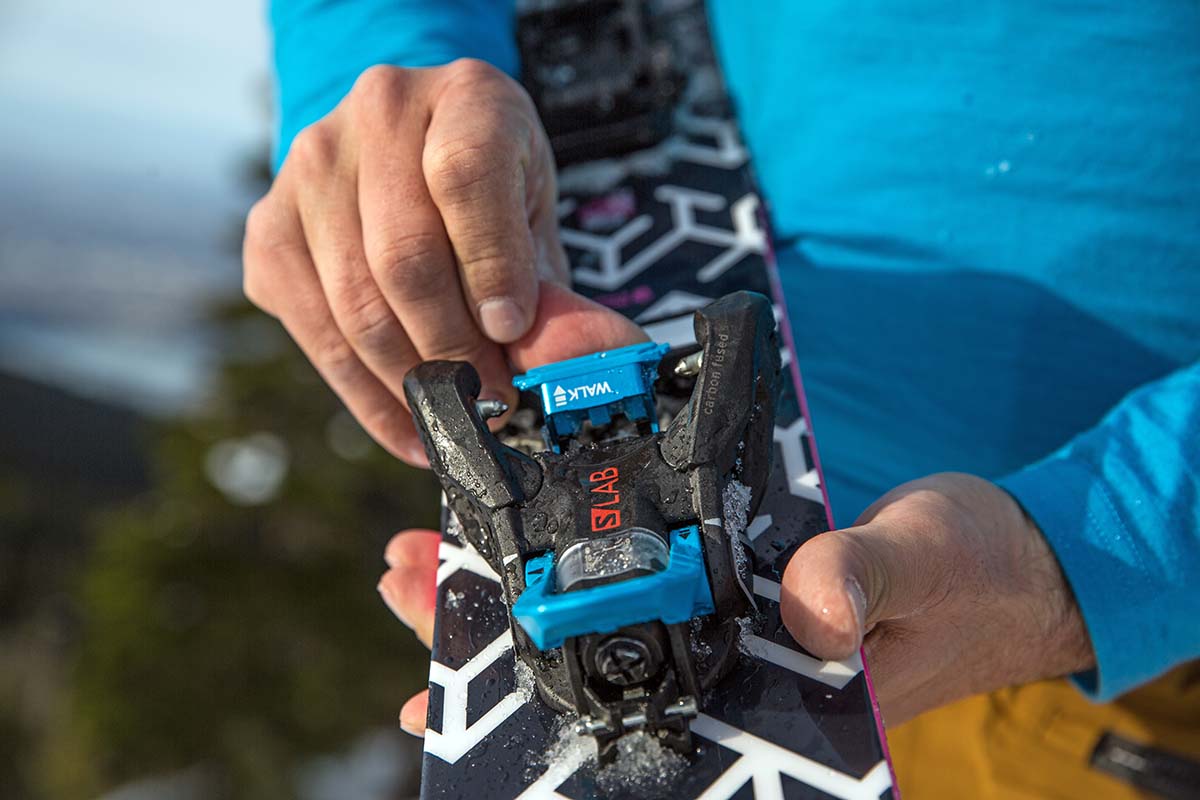
Location: Salt Lake City, Utah
Popular models: Pagoda Tour and Carbon Lotus
What we like: The crème de la crème for committed backcountry enthusiasts.
What we don’t: You pay a serious premium for the DPS name.
Considered the gold standard among backcountry skiers, no other brand comes close to matching the cachet of the DPS name. These skis are some of the most premium on the market. They’re beautifully crafted with simple but elegant topsheet designs, utilize top-end materials and unique constructions with varying layers of woods and carbon fiber, and offer excellent performance in powder (no surprise given they’re based in Utah). For those looking for the ultimate combination of looks and soft-snow capabilities, DPS is hard to beat.
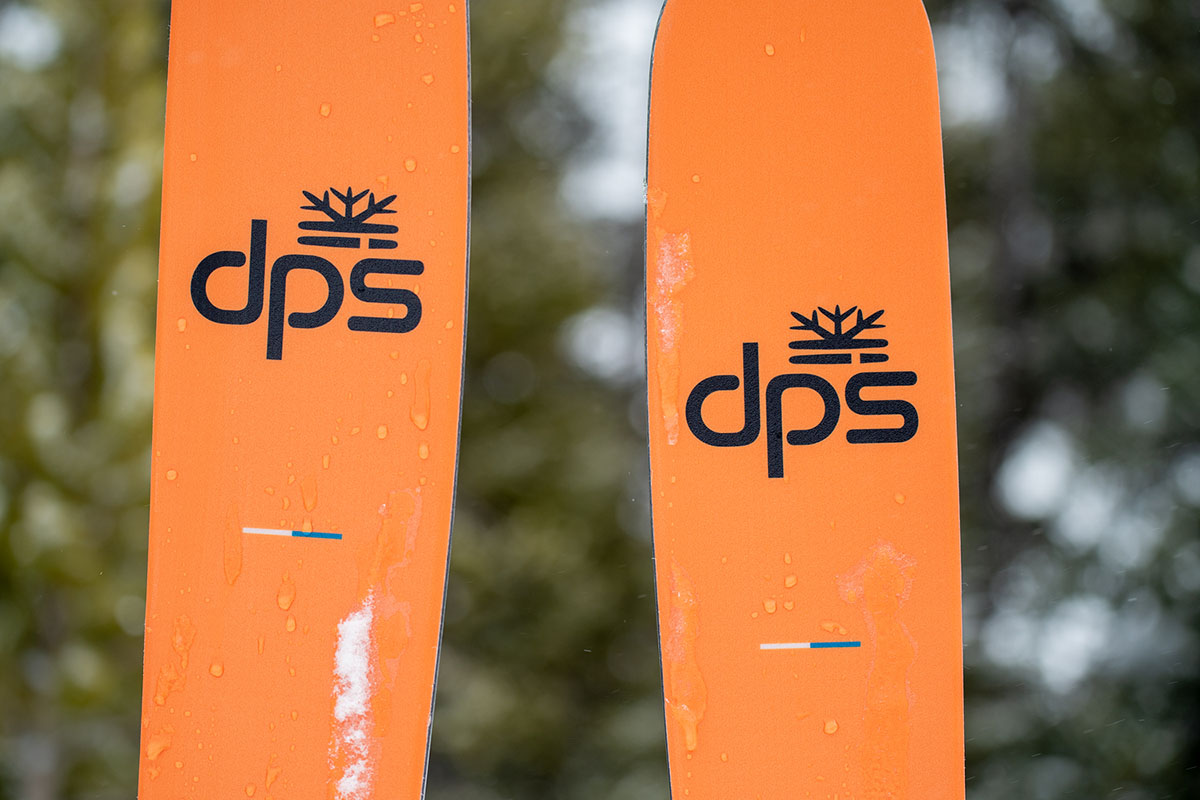
The biggest barrier to entry is cost: DPS skis don’t come cheap, with many of their designs checking in around $1,600. You may hear some backcountry professionals call them "Dentist-Priced-Skis," but with the cost does come quality. The brand isn’t shy about experimenting with cutting-edge constructions and materials, and their refinement and durability are backed by years of R&D. In the same vein, DPS offers a unique alternative to waxing with their Phantom Glide, a one-time, waxless base treatment (the kit will run you $130) designed to increase glide and eliminate the need to wax your skis. New for 2026, their freestyle Koala line gets a carbon construction update, providing more control. And, for those who grew up watching Ted Ligety climbing the ski racing ranks, you'll be psyched to hear that DPS and Ted teamed up to crate the Pisteworks series for hard and fast on-piste skiing.
Location: Salzburg, Austria
Popular models: Maverick, Bent, and Backland
What we like: A quality lineup from racing to backcountry.
What we don’t: Many of their on-trail and all-mountain designs aren’t beginner-friendly.
Atomic is credited with creating the first powder ski in 1988 (the aptly named Powder Magic), but the Austrian brand’s current offerings run the gamut from racing designs and on-piste skis to ultra-wide touring and freeski models. Another member of the conglomerate Amer Sports, they're part of the same design groups as Armada and Salomon.The Maverick is the company’s all-rounder: Ranging from 88 to 100 millimeters in width, this ski has widespread appeal for a range of ability levels and terrain, and the lightweight, low-profile construction make it a quality performer all over the mountain.
Atomic recently discontinued their all-mountain Vantage series, but that ski was never a favorite of ours: Its light-but-stiff build was unforgiving and could be downright harsh in the right (or wrong) conditions. The latest Maverick is a more refined performer—it’s still light and quick but doesn’t require as much constant attention to keep from getting bounced around. Their Bent collection is now considered the standout—the Bent Chetler 120 and Bent 90 top our powder ski and intermediate ski round-ups, respectively—for its skillful balance between weight and power, not to mention the incredible topsheet graphics from artist/professional skier Chris Bentchetler himself. In addition to skis, Atomic also pumps out a quality lineup of boots, bindings, poles, helmets, goggles, and more. It’s worth noting that despite their shared ownership with Salomon and crossover in branding with products like the Shift and Warden bindings, Atomic’s boot division functions independently.
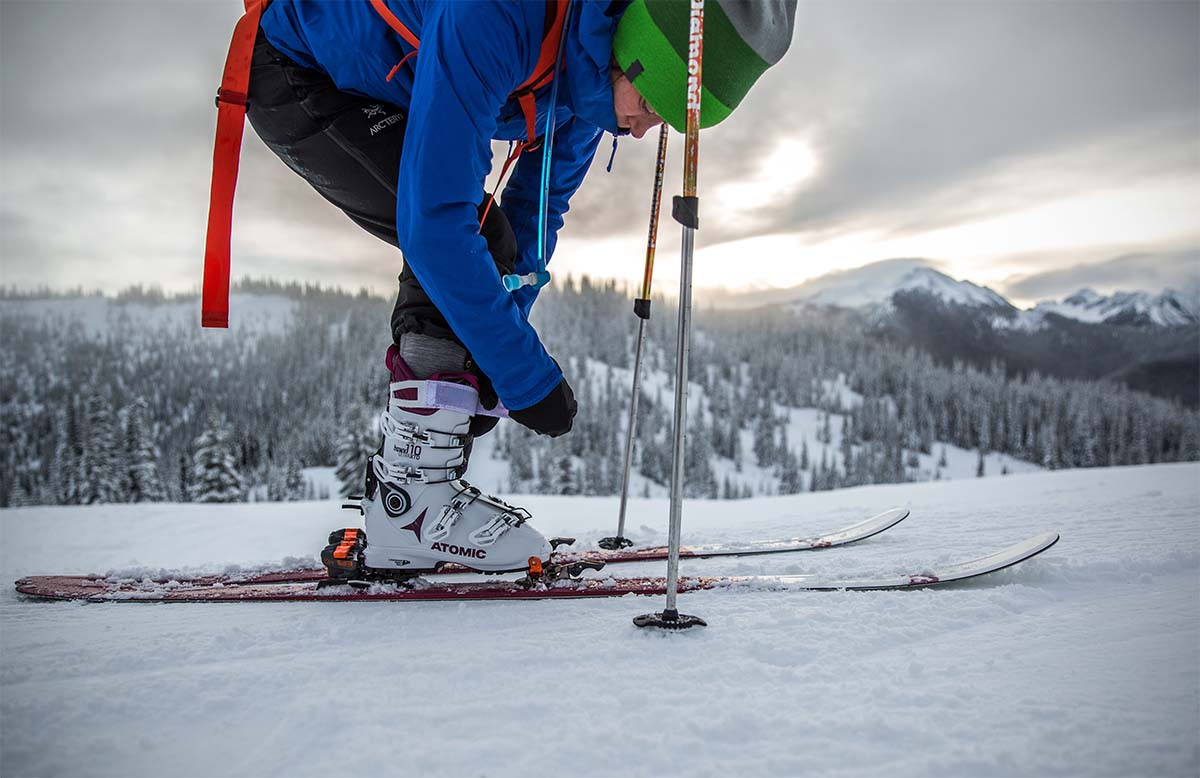
Location: Chamonix, France
Popular models: Corvus, Navis, and Justis
What we like: Bold, attractive designs with do-it-all intentions.
What we don’t: High price tag and not at the top of the lightweight market.
Situated in the heart of the French Alps, Black Crows is a relative newcomer to the U.S. but has quickly garnered a lot of attention among committed riders. Started by pro freeskiers Camille Jaccoux and Bruno Compagnet in 2006, the goal was to "collide beauty and efficiency into skis." The initial result was the Corvus, which remains a staple in Black Crows’ lineup today. Since then, they've expanded into a whole murder (what you call a group of crows) of high-performance skis for the groomers and touring high in the alpine. The Black Crows Camox Freebird––part of their Freebird Touring collection––is one of our favorite touring skis.
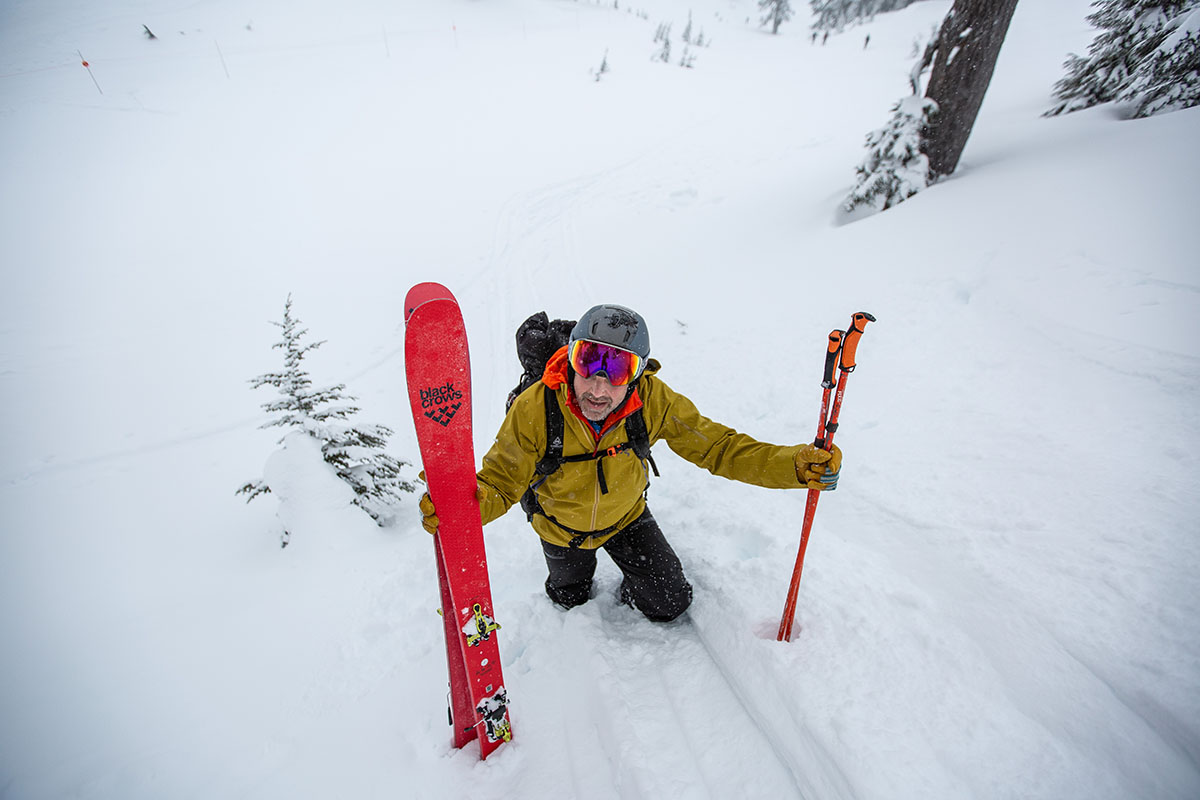
Black Crows is a decidedly modern brand, with contemporary shapes and designs that, in addition to pleasing older, lifelong skiers, also appeal to a younger crowd more than many other brands. And the après culture is strong: Each year, the company hosts the Chamonix Unlimited Festival, a week-long event that started as a small celebration for the brand but has evolved into a popular music festival that attracts thousands.
Location: Seattle, Washington
Popular models: Vision, Pandora, and Blade
What we like: A fun, freestyle-first company with a commitment to innovation.
What we don’t: Not a do-everything brand.
Owned by K2 and repped by pro rider Tom Wallisch, Line Skis embodies modern freeride and freestyle skiing. With a vision to make skiing “more funner,” founder Jason Levinthal—who also started J Skis and Full Tilt boots—began creating skiboards in his garage in upstate New York in 1995. This quickly evolved to more all-mountain-friendly designs, and Line filed the first patent for twin-tip skis two years later. Since its inception, the brand has maintained its fun, hip personality and remains a staple in the freeskiing world. They continue to push the envelope with open-mindedness and inclusivity in mind with their media and designs.
New in 2026, the Line Blend has an updated ski shape and advanced durability; the Tom Wallisch Pro got the same construction updates. Known for progressive art and both freestyle and beginner skis, the Pandora line is now an accessible favorite for those hitting the park or still getting their ski legs under them with its forgiving design. Many of their current skis are a good value, including the best-selling Pandora 99. True to form, they also have a handful of park-ready options for those who prefer rails and jumps, including the popular and namesake Tom Wallisch Pro. Brand new skiers who are still learning on greens or their first blue runs should look elsewhere, but if you can link turns and are starting to step up your game as an intermediate skier, you should consider line.
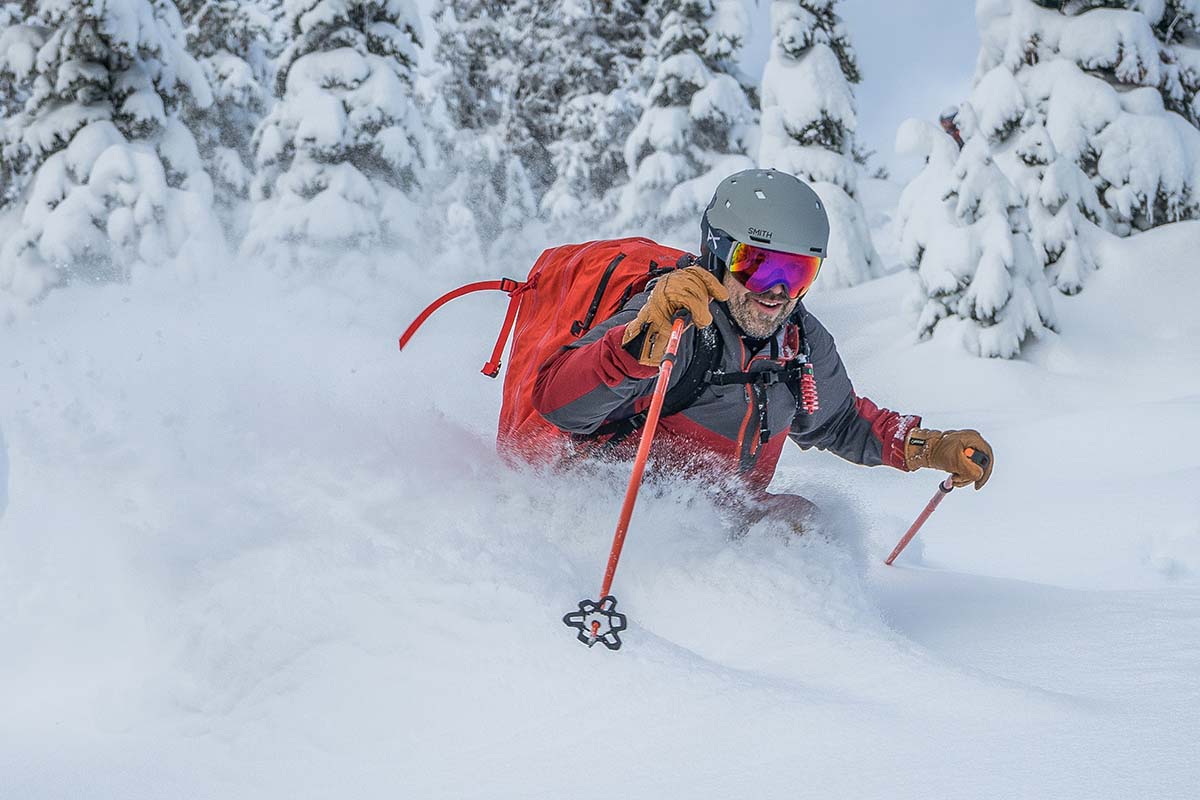
Location: Park City, Utah
Popular models: ARV and Declivity
What we like: Competitive freeski designs.
What we don’t: Not as well rounded as many of the companies above.
Like Line Skis, Armada is a modern brand with a clear focus on freeskiing. Now part of the Amer Sports conglomerate, Armada quickly established itself after its founding in 2002. One of the brand’s standout athletes and founding members is Tanner Hall, a multi-year Winter X Games champion and a highly accomplished slopestyle and superpipe rider known for his ambitious tricks both in the park and in the backcountry.
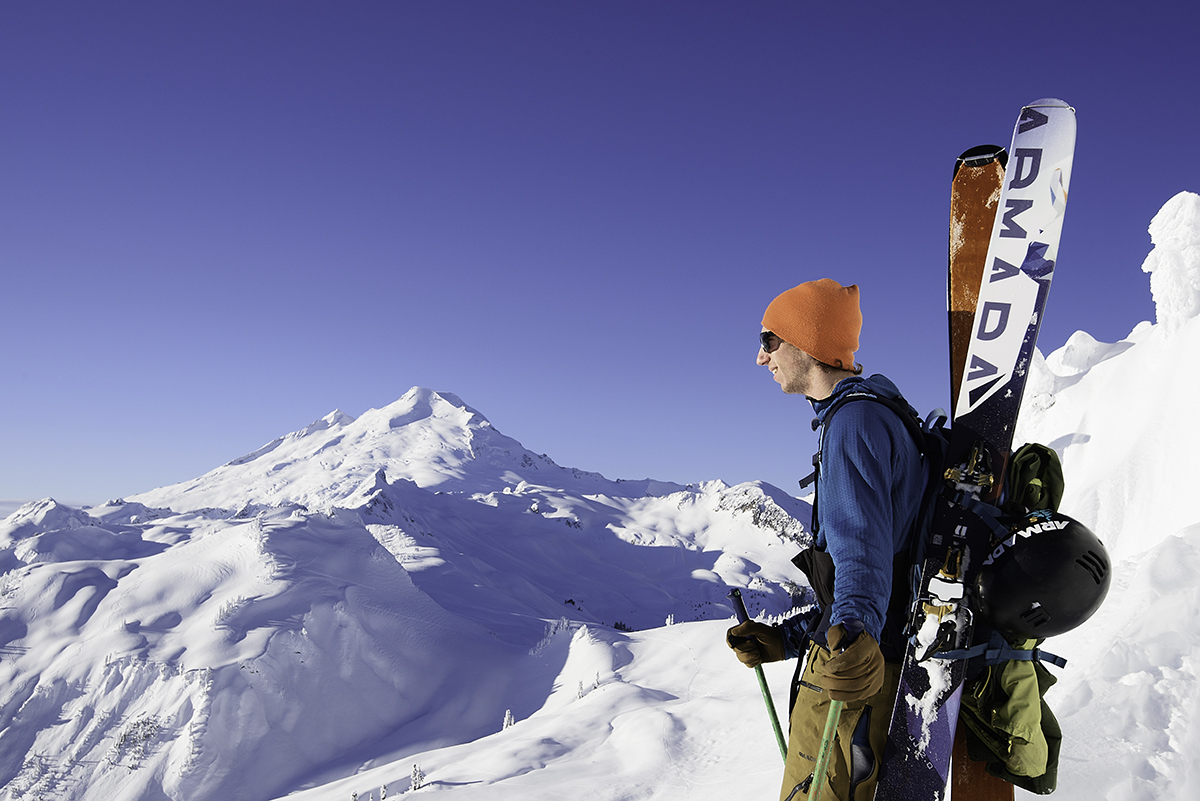
For 2026, Armada adds the ARV 106 Ti, the brand's flagship ski now outfitted with a titanium inner plate to increase stability. Their Declivity (and women’s Reliance) is a good all-rounder and can handle everything from granular slush in the Northeast to dipping into the backside glades on a Pacific Northwest powder day. Also of note is the brand's foray into the ski boot world with the uniquely-buckled, hybrid cabrio design of the AR One boot. Armada certainly appeals to a younger and more freestyle-focused demographic, and the unique topsheet graphics and modern-feeling designs are fun and playful.
Location: Salt Lake City, Utah
Popular models: Helio Carbon and Impulse
What we like: A touring specialist with a long history in backcountry exploration.
What we don’t: The epitome of "a climber's ski," for better and for worse.
Started by Patagonia’s Yvon Chouinard in the late 1950s and picked up by former employees in 1989 after filing for bankruptcy, Black Diamond is now a backcountry and climbing juggernaut with a long and storied history in mountain exploration. The brand started as a climbing hardgoods manufacturer––one that is still dominating the market––but over the years they've assembled an ever-improving lineup of skis, bindings, poles, and other ski hard and softgoods, that are historically lower in price than more high-end ski brands. While the ski goods haven't always been top of the line, they get the job done with the uphill in mind. The Helio Carbon 88, in particular, stands out as an exceptional ultralight design and a great match for long treks and ski mountaineering objectives, while their newer Impulse series adds more versatility to their lineup.
Given their newness to the sport when compared to their climbing history, BD’s ski collection is still modest, comprising just two core models at the time of publishing. That said, the latest Impulse series (ranging from 98 to 112mm underfoot) marks the brand’s foray into the all-mountain category, and initial reviews have been positive thus far. Even so, most of BD's current offerings are still uphill-focused, which comes as little surprise given their heritage, history, and location smack-dab in Utah’s Wasatch range.
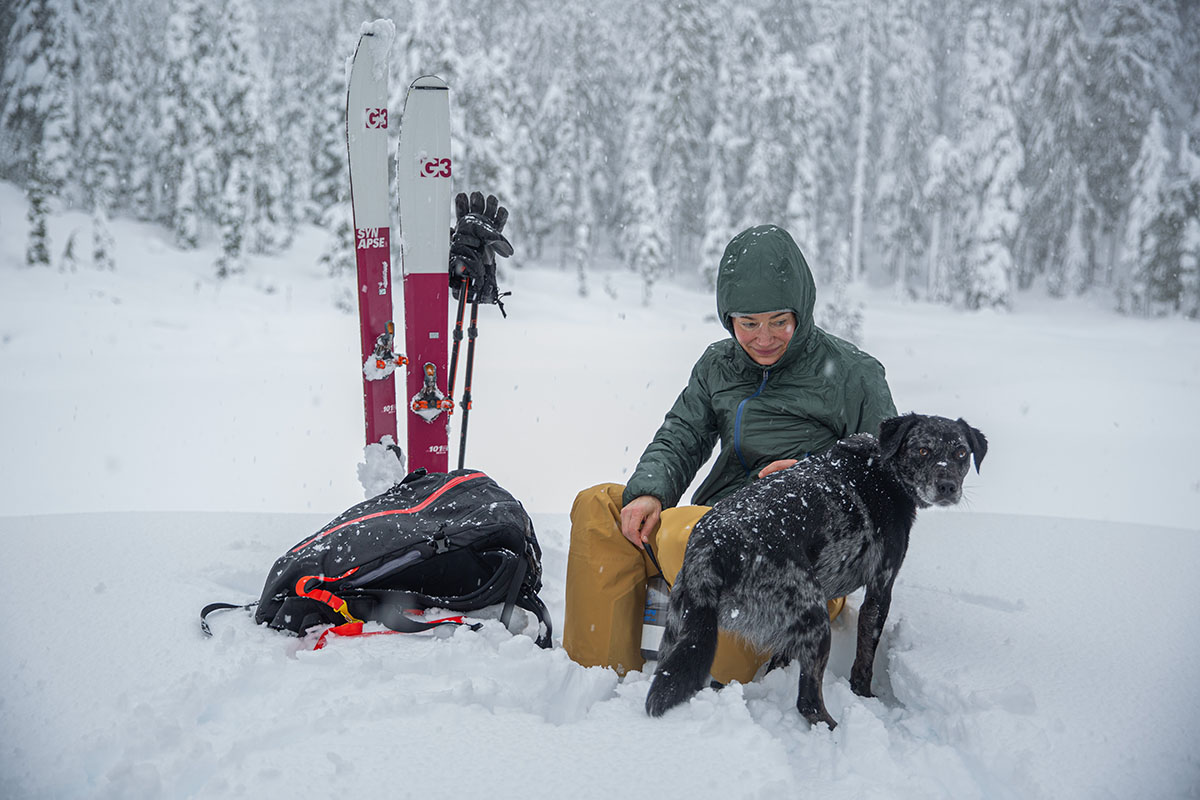
Location: Hohenems, Austria
Popular models: TX and FX
What we like: Well built and a top choice among discerning skiers.
What we don’t: Like DPS, these skis are pricey.
Like DPS above, Kästle skis are ultra-premium and some of the most expertly crafted on the market. After a nearly 10-year hiatus, Kästle returned to the ski world in 2007 and began working to bring race technology into their all-mountain designs. One result was their HollowTech tip, which strips away material at the front of the ski to reduce swing weight while maximizing stability, dampening, and edge grip. It’s a signature piece in their line and recognizable by a brightly colored oval at the front of each ski.
Along with the top-end materials and construction practices come steep prices. But while DPS offer a small step up in performance, Kästle skis perform about the same as other premium ski brands like Black Crows or Blizzard. They can be hard to track down in the middle of the season, and their designs trend a little more toward the all-mountain, big-mountain, and skimo categories, although the touring-focused TX line is well respected among advanced and expert riders. Budget-conscious skiers and those new to the sport will want to look elsewhere, but the performance and build quality are top-notch.
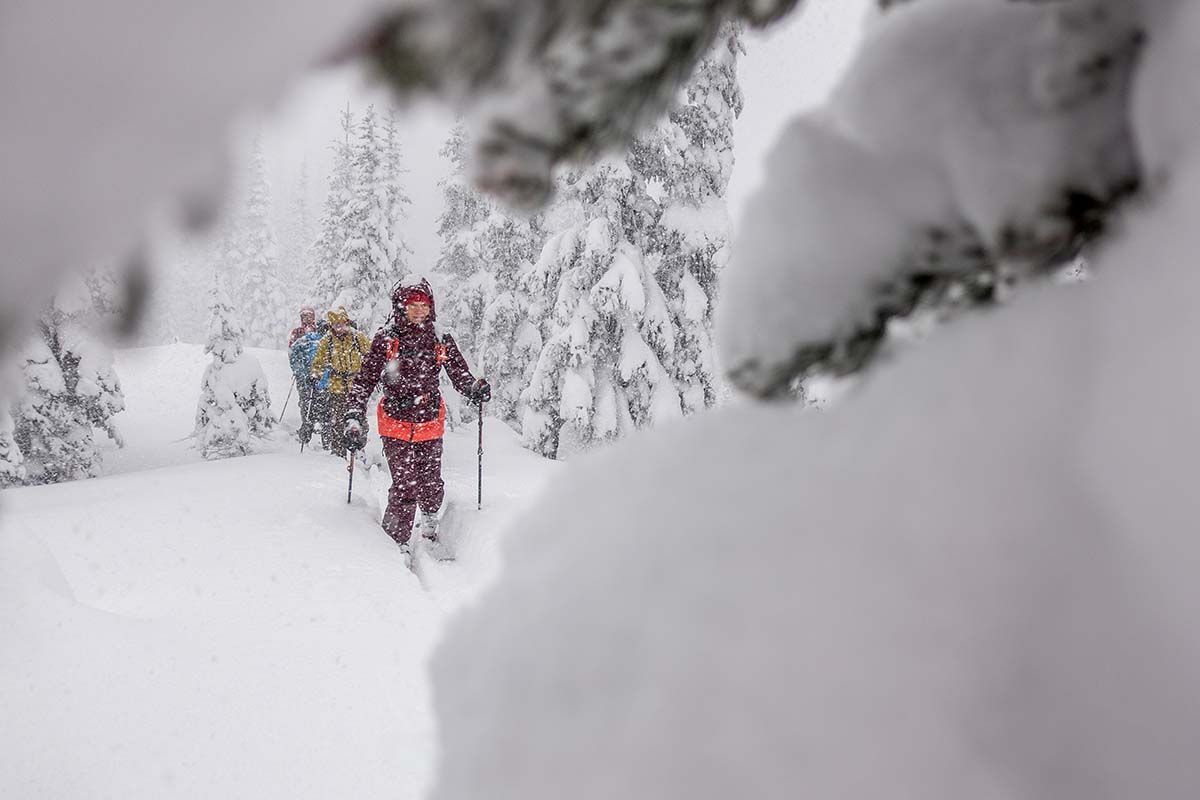
Location: Golden, Colorado
Popular models: Natural, Pioneer, and Nomad
What we like: Beautiful graphics, excellent quality, and generous warranty.
What we don’t: Limited-edition designs sell out quickly.
Take one look at Icelantic’s skis and you’ll immediately recognize that there’s something a little different going on here. Many designs we see on the mountain are unassuming in appearance, but Icelantic artist Travis Parr uses inspiration from nature to create beautiful, colorful topsheets that stand out. These skis are handmade in Colorado, are excellent performers on- and off-piste, and are made using high-quality materials. Value is another big selling point: The company offers a generous three-year warranty, along with prices that consistently undercut the competition.
Icelantic’s Natural (and women’s Mystic) is one of our favorite backcountry designs: It has a solid build that holds up well over time, floats extremely well for the 101-millimeter waist (the women’s is 97mm underfoot), is easy to manage and flick around in tight spaces, and is forgiving overall. For areas that get less snow and skiers who prefer groomed terrain, their Pioneer and women’s Riveter collections are also good performers. Icelantic only makes a handful of each design, meaning these skis tend to sell out quickly each year. They aren't high-end performance go-to's like Black Crows, but they're a versatile brand with forgiving, well-built options.
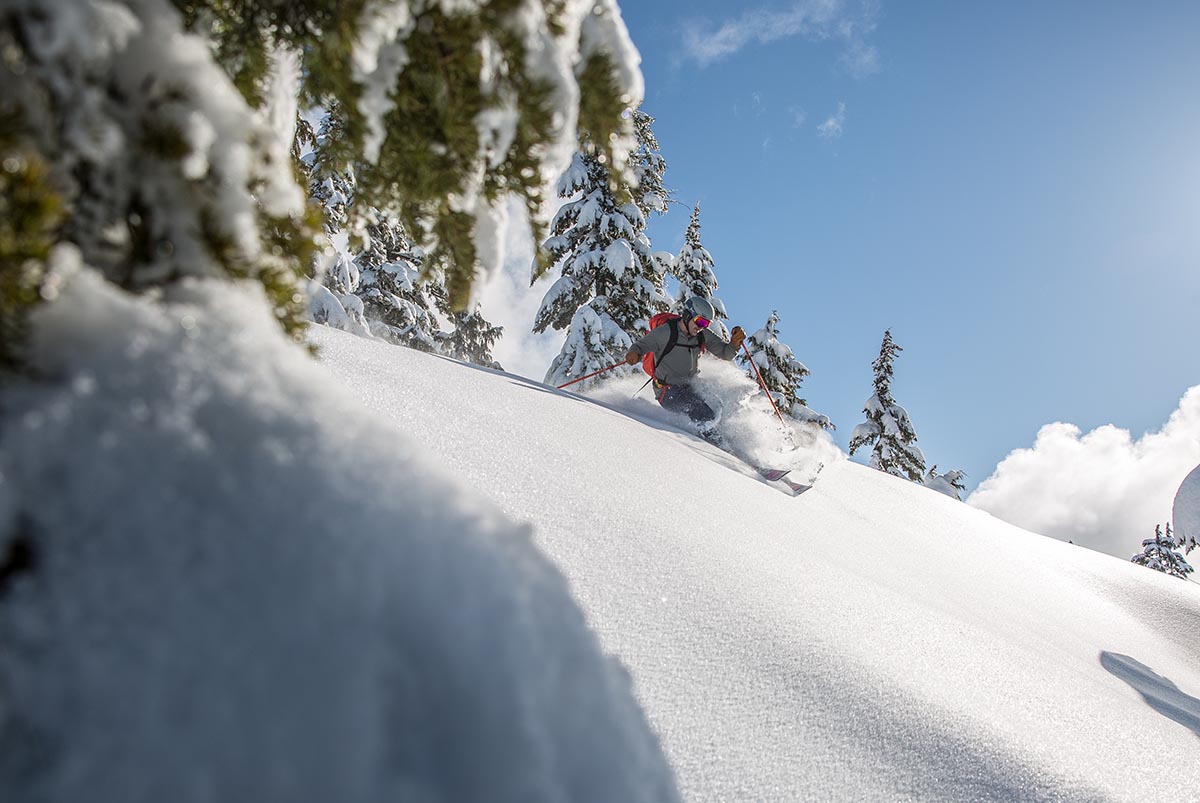
Location: Begunje na Gorenjskem, Slovenia
Popular models: Ripstick, Wingman, and Playmaker
What we like: An innovative brand whose skis strike a nice balance of performance and style.
What we don’t: High-end cost and lower availability.
Elan flies a little under the radar in the U.S., but this Slovenian brand has been innovating since the 1940s. Key developments include popularizing screen-printing technology in the 60s, debuting “extreme sidecut” for their GS race skis in the 70s (picture an hourglass shape with a wide tip and tail and very narrow waist), and creating the world’s first foldable ski (the Voyager). In fact, Elan is the first ski brand to open their own museum, which is dedicated to showcasing the brand’s heritage and manufacturing innovations—both in the ski industry and elsewhere (Elan has also produced sailing vessels, airplanes, gym equipment, and more).
Elan’s current ski lineup consists of a small but quality assortment of high-performance, quick-reacting models. The Ripstick 96 is a prime example: The ski’s freeride-focused build floats well in soft snow but remains snappy in tight spaces, and added camber along the inside edge and rocker at the outside (there are dedicated right and left skis) make it smooth and easy to control for experienced skiers. These skis are generally kind to those who know how to stay forward and over their toes––so they may not be the best options if you're newer to the sport. Their groomer-focused Wingman line hits a nice balance between fun and performance.
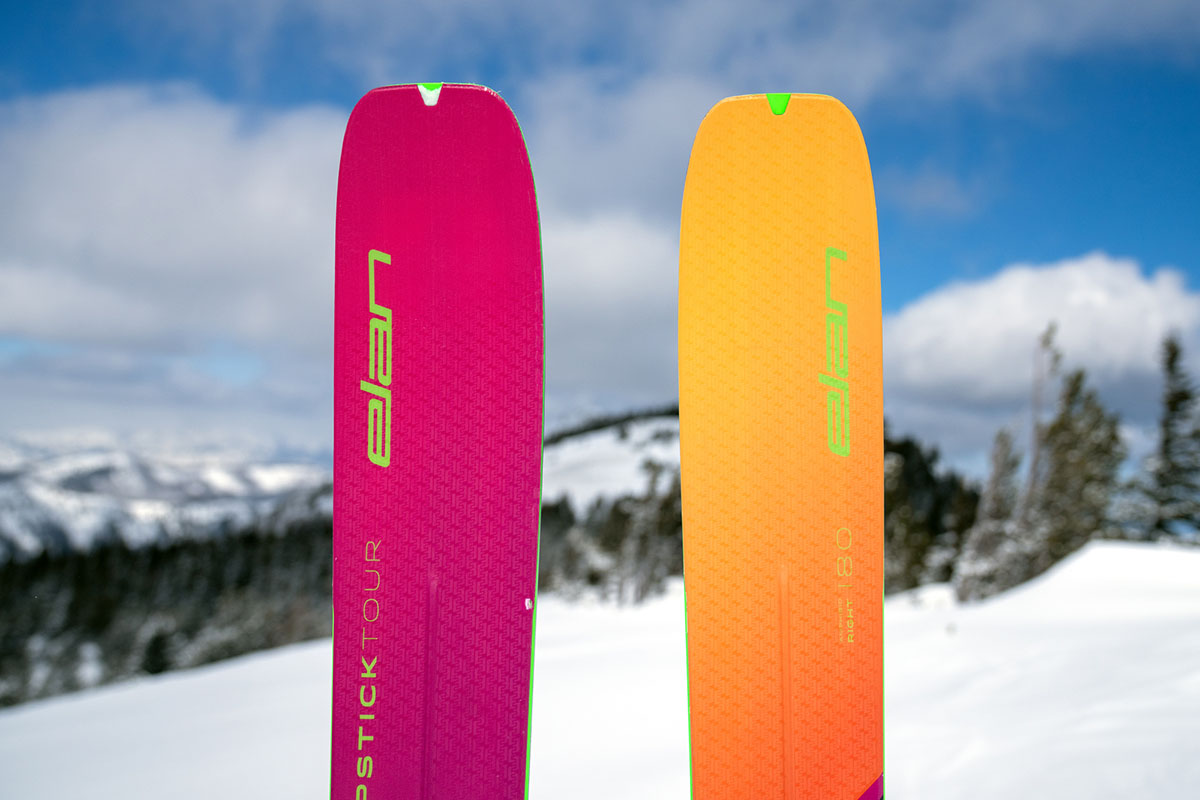
Location: Salt Lake City, Utah
Popular models: MSP and Renegade
What we like: Highly competitive freeride designs and class-leading satisfaction guarantee.
What we don’t: Geared toward experienced riders and only sold through 4Frnt's website and select retailers.
4Frnt is a small, independent freeski brand with a humble but intentional presence, but heir skis are the real deal. The Renegade is light and nimble for floating in powder but impressively smooth and predictable at speed, making it one of the most capable big-mountain freeride designs around. World-renowned freeskier Eric “Hoji” Hjorleifson helped design and test the rest of 4Frnt's powder collection, including the namesake Hoji. The Ravens have also become quick backcountry cult favorites. More telling is that 4Frnt backs all of their skis with a class-leading satisfaction guarantee—if you’re not happy with them during your first five days of use (even if that happens to be next season), 4Frnt will provide a full refund, which is pretty much unheard of.
Another standout in 4Frnt's lineup is their women’s-specific MSP CC, which is our top pick this season for female riders progressing their skills. The “CC” in the name is short for Contour Core technology. 4Frnt shifted the thickest and stiffest part of the core farther back to match the way most women generate power through a turn, which makes it easier to put pressure on the shovel of the ski and more readily initiate turns. The unisex MSP lacks the Contour Core tech but is sold in two additional width options (91 and 107mm) for versatility both on and off piste. 4Frnt's lineup is geared toward the experienced all-mountain and backcountry crowds, and they only sell direct to consumer. But if you’re a confident rider and don’t mind seeking them out, you likely won’t be disappointed.
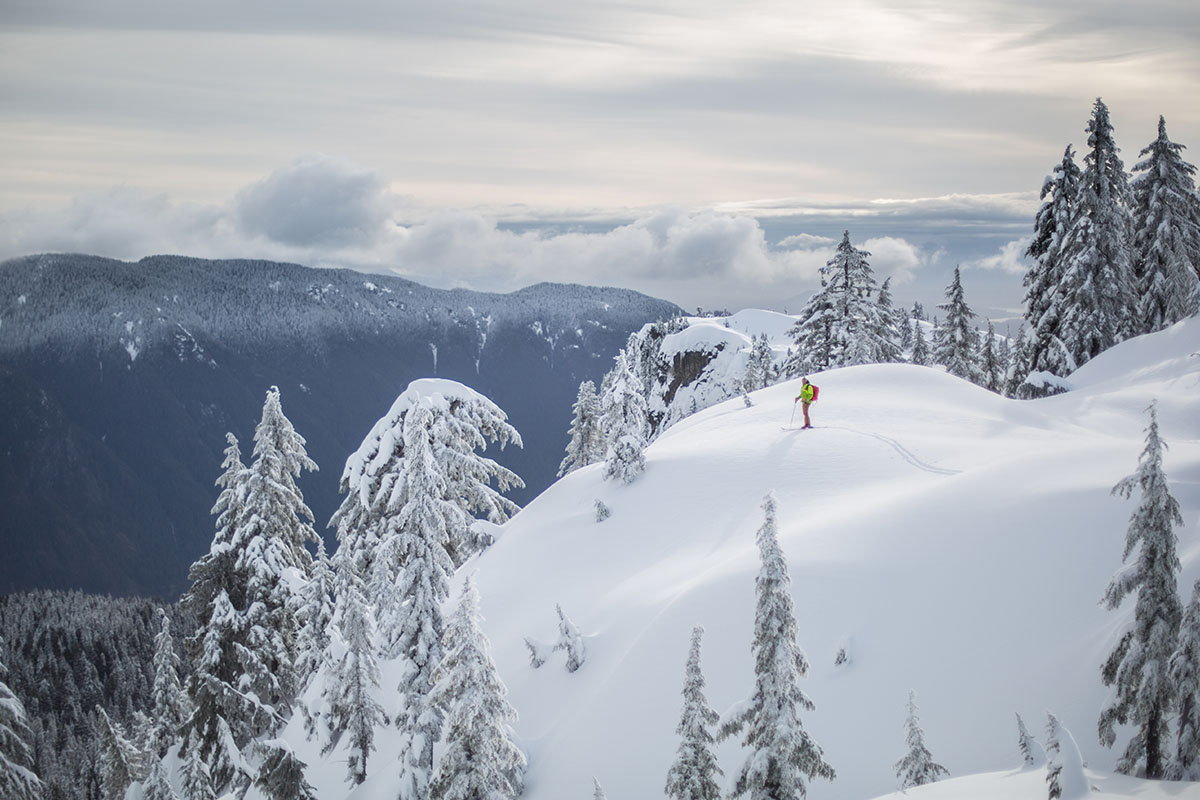
Location: Reno, Nevada
Popular models: SOS, Rebel, and Rafiki
What we like: A women-owned and -operated brand with a clear focus on inclusivity.
What we don’t: Limited collection with no true high-performance options.
With a mission to “shred the patriarchy,” women-owned Coalition Snow has turned the shrink-it-and-pink-it mentality on its head with designs made for and by women. Their collection comprises five models at the time of publishing, and two of our favorites this season are the all-mountain-focused Rebel and powder-ready Rafiki. Both skis were quick to impress during testing: The Rebel is snappy, agile, and offers a very intuitive feel when making tight turns on corduroy or through the trees, while the Rafiki promotes a surfy and playful ride in soft snow with enough power to still charge hard through crud. And like the rest of the collection, both skis share striking and colorful topsheet designs that are sure to stand out.
In addition to being owned and operated by women, Coalition Snow puts a strong focus on inclusivity, regardless of ability level or gender identity. That said, if you're looking for uphill weight savings or performance in the steeps, you will likely need to look elsewhere. For example, the aforementioned Rebel (82-88mm underfoot depending on length) is stiff and harsh on ungroomed terrain, but doesn't have the snappiness you'd want in tight terrain. On the snowboard side, Coalition also offers a couple all-mountain models, as well as a swallowtail and splitboard that build off of the same design.
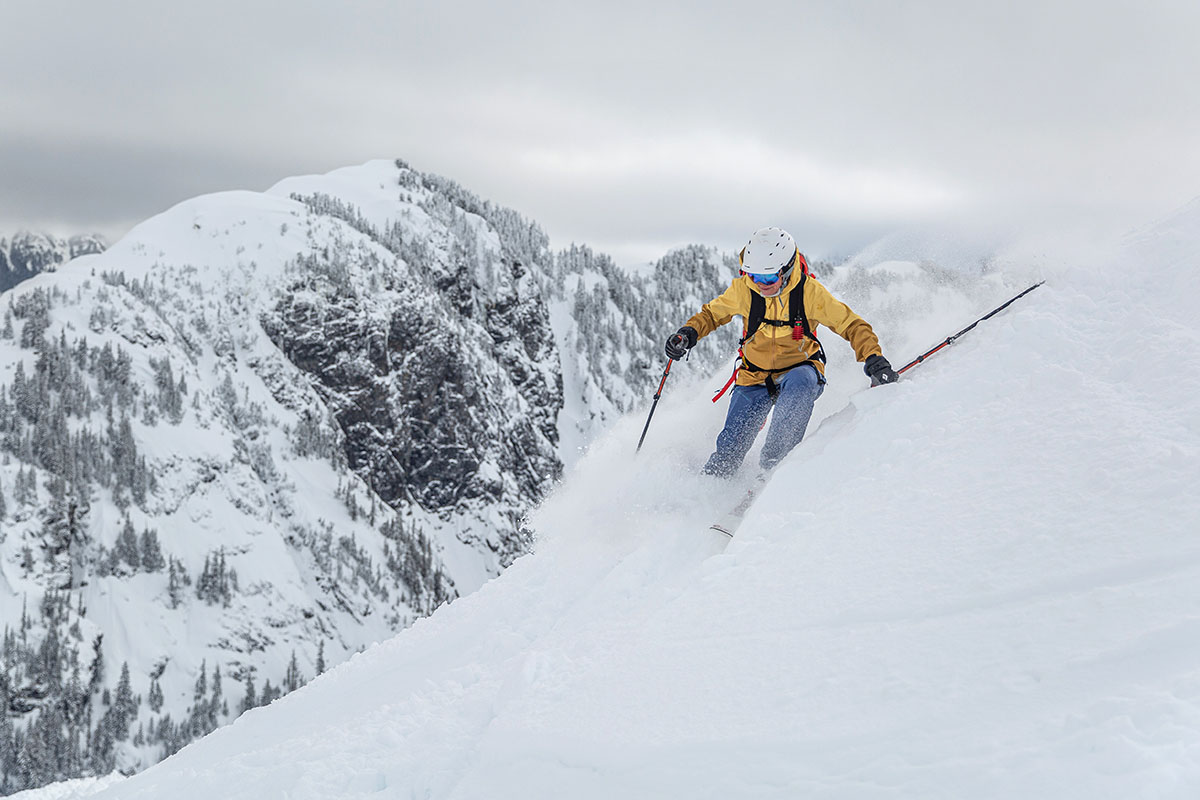
The companies above represent some of the biggest names in the ski industry, but the up-and-comers are on their heels. First is Faction—a Swiss collective of self-proclaimed “outcasts” with a penchant for fun and creativity on the slopes. In 2013, the brand teamed up with French pro rider Candide Thovex to develop new models and inspire the next generation of freeskiers with a series of wild, trick-laden videos that put them on the map. Today, the brand has a loyal—albeit still relatively small—following in the North American market, with collections like the Dancer and Agent growing in popularity each year. In fact, they're hardly up-and-coming a anymore; they're just thriving. Another upstart on the rise is Season Eqpt, which focuses on unisex designs and a wide range of sizing options to accommodate as many riders as possible.
The up-and-comers above offer a nice alternative for riders wanting to explore outside of the mainstream, but there are a healthy number of cottage brands that specialize in small-batch, custom-built designs. A few of our favorite shops include Wagner Custom Skis out of Telluride, Colorado, Praxis Skis in Lake Tahoe, California, and Prior in Whistler, B.C., all of which offer varying levels of customization for riders who know exactly what they want in their skis. Vermont-based J Skis is another standout and sells limited-release, handmade designs with limited-edition graphics and premium materials. The brands above are revered for a reason, but the cottage industry is thriving within the all-mountain and backcountry ski worlds, and there are some excellent options to consider.
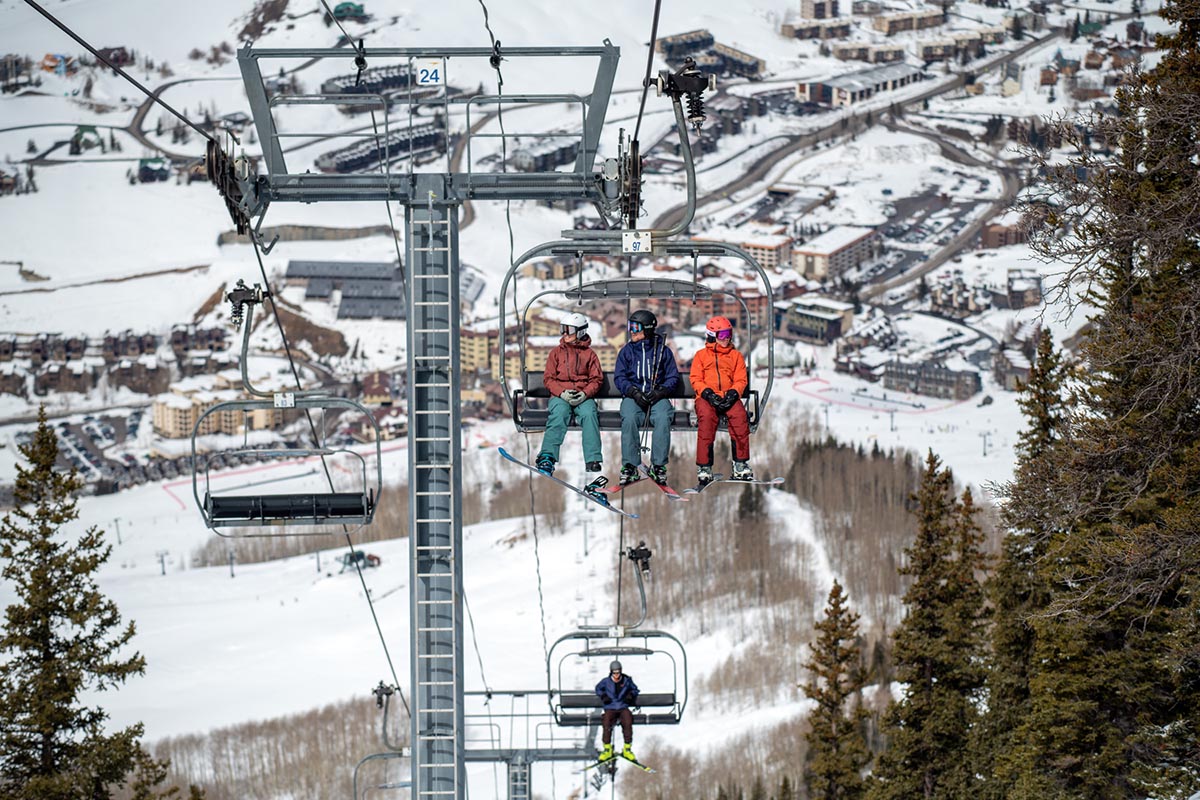
We always recommend supporting your local ski shop when possible. Talking to someone in person, seeing the gear in-hand, and demoing when possible can be a valuable way to pin down exactly what you want. It’s no secret that skis are expensive, and purchasing from a reputable local shop or well-known retailer can take some of the stress out of the buying process. If you don't live in a mountain town with local shops, we've put together a list of the 5 Best Sites to Buy Skis and Ski Gear, taking into account how easy their sites are to use, the amount of ski gear they offer, shipping costs, return policies, and the quality of their customer service. Evo.com is one of our favorite retailers for its extensive collection of touring and downhill designs, easy-to-use interface, and comprehensive sizing and buying guides. Backcountry.com also sells a nice array of powder and alpine touring skis, and REI Co-op is known for their excellent return policy and member benefits, though their ski selection is limited compared to Evo and Backcountry.
Back to Our Top Ski Brands See Our Ski Gear Reviews